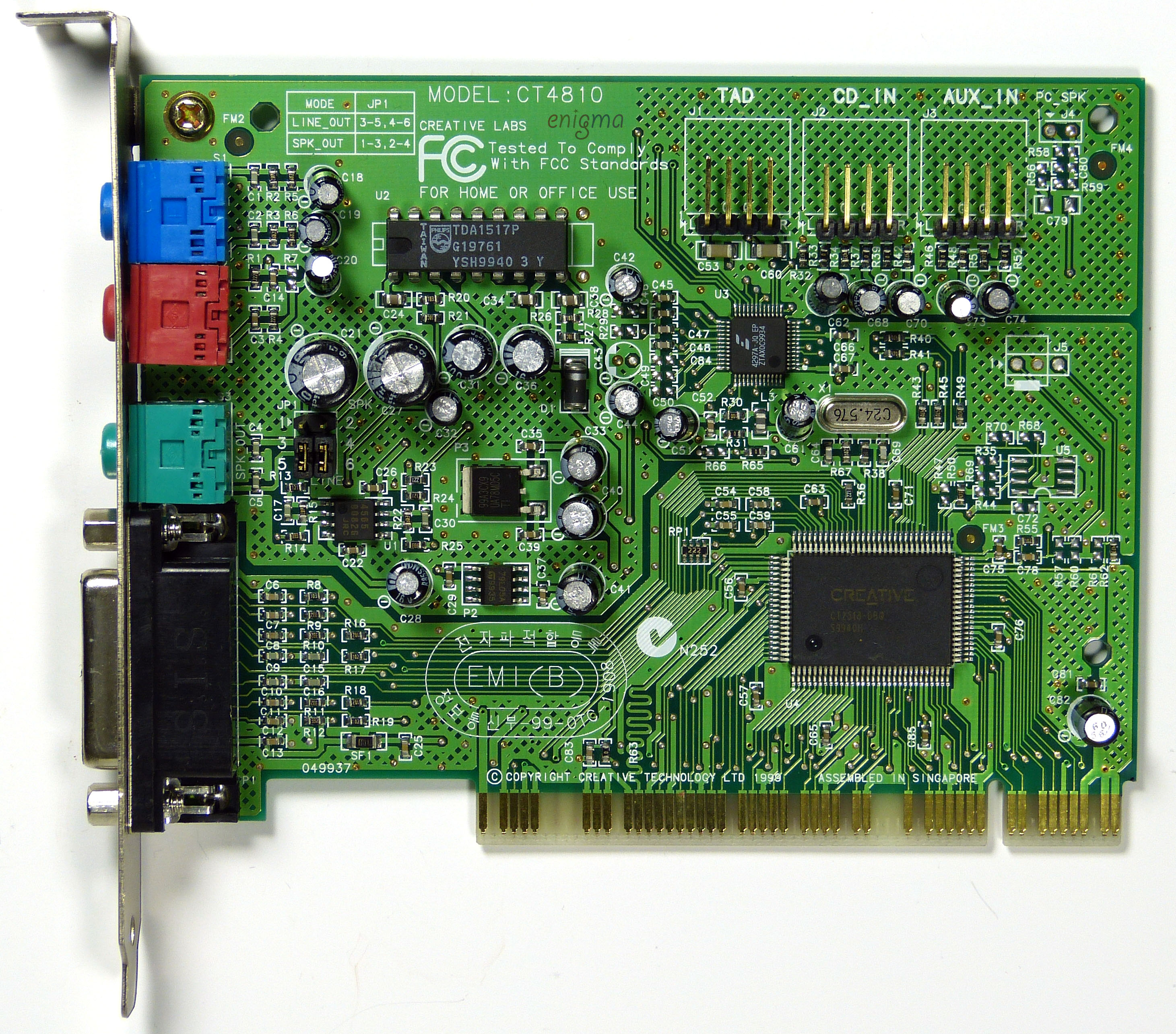

It was particularly unfortunate because the AudioPCI used system RAM for patch set storage which in itself offers tremendous potential for new patch sets over the traditional ROM storage previously used.

Consequently, there are very few custom wave sets available, in contrast to the huge availability of home-made releases in E-mu's SoundFont format. The ".ecw" file format (Ensoniq Concert Wavetable) was never made open as had been hoped for by enthusiasts. Several patch set choices are available, varying in size and instrument quality (2, 4, or 8 MB).
CT4810 DOS DRIVERS DRIVERS
The DOS and Windows drivers support sample-based synthesis through Ensoniq's ".ecw" patch set format. The jack switches modes if 4-speaker output became active. An oddity is that the rear channel was connected to the same output jack as line input.
CT4810 DOS DRIVERS SOFTWARE
The 4-speaker mode is only activated by software supporting the DirectSound3D quadraphonic mode. It offers many of the audio capabilities of the Soundscape ELITE card, including several digital effects ( reverb, chorus, and spatial enhancement) when used with Microsoft Windows 95 and later versions of Windows.ĪudioPCI was one of the first cards to have Microsoft DirectSound3D 4-speaker playback support. This was made possible by the move to the PCI bus, with its far greater bandwidth and more efficient bus mastering interface when compared to the older ISA bus standard.ĪudioPCI, while designed to be cheap, is still quite functional. In another cost-cutting move, the previously typical ROM chip used for storage of samples for sample-based synthesis was replaced with the facility to use system RAM as storage for this audio data. The board consists only of a very small software-driven audio chip (one of the following: S5016, ES1370, ES 1371) and a companion digital-to-analog converter (DAC). In comparison to the wide variety of chips on and sheer size of the older Soundscape boards, the highly integrated two chip design of the AudioPCI is an obvious shift in design philosophy. The AudioPCI, released in July 1997, was designed primarily to be cheap. Pressure from intense competition, especially with the dominant Creative Labs, was forcing audio card makers to try to keep their prices low. Their cards were very popular with PC OEMs, but their costs were too high and their musical instrument division was fading in revenue. Towards the end of the 1990s, Ensoniq was struggling financially.


 0 kommentar(er)
0 kommentar(er)
